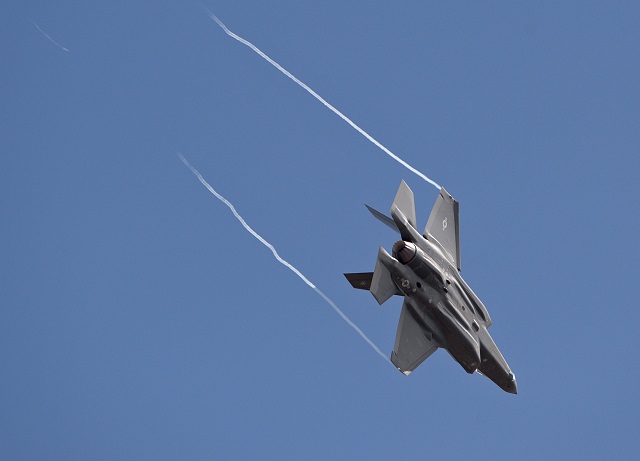Canada’s new defence minister has pledged an “open process” for replacing the Royal Canadian Air Force’s aging CF-18s, while not ruling the Lockheed Martin F-35 out of any future competition.
In a conference call from Erbil in northern Iraq today, Harjit Sajjan said replacing the nation’s 77 Boeing CF-18A/Bs in a “timely manner” is his focus, not ruling a particular aircraft in or out.
“My focus is about replacing our CF-18, and we’re going through a proper process to make sure we have the right requirements so we have the right capability, not only for our country but for how we relate to NORAD (North American Aerospace Defense Command) and our commitments to NATO,” says Sajjan, who assumed the role in November following a change of government.
“We’re going to do this in a responsible manner.”

Royal Canadian Air Force CF-18
RCAF
Canada’s Liberal government was explicit in its opposition to the Lightning II in the run-up to the October election, with the party’s platform declaring, “We will not buy the F-35 stealth fighter-bomber”.
The government has yet to launch its promised fighter competition, which is expected to favour a lower-cost aircraft optimised for the defence of North America over a “stealthy, first-strike capability”.
Canada has participated in the joint strike fighter programme since 1997, and the former Harper government announced the purchase of 65 F-35s in 2010 without a formal competition.
Sajjan indicated that the new government would not actively block the F-35 from participating.
“The question always comes up about whether it’s F-35 or another type of aircraft,” he says. “This is not about the F-35. My mandate and my role is about replacing the F-18.
“We are committed to replacing the F-18s in a timely manner so that we do not create a capability gap that has been created in the past with our ships.”

Lockheed Martin F-35
USAF
Canada’s CF-18s were procured from 1982 to 1988, and the natural replacement would be the Boeing F/A-18 Super Hornet, which continues to be procured by the US Navy. Viable alternatives include the Boeing F-15SE Silent Eagle, Dassault Rafale, Eurofighter Typhoon or Saab Gripen.
F-35 joint programme chief Lt Gen Christopher Bogdan told US lawmakers in October that Canada’s rejection of the F-35 could raise the cost per jet by $1 million.
That loss of 65 orders, none of which have been put on contract, might be offset by the Pentagon’s plans to purchase 31 additional F-35Cs through 2021 over existing plans. Congress also approved $1.33 billion for 11 more F-35s in Fiscal 2016.
This week, the programme office announced that Lockheed met its production goal for 2015, delivering 45 aircraft: eight F-35Bs, eight F-35Cs and 29 F-35As.
Two F-35As were delivered to the Royal Norwegian Air Force, and Italy received its first locally-assembled example.

The first Norwegian F-35A
James Drew/Flight International
Source: FlightGlobal.com
















